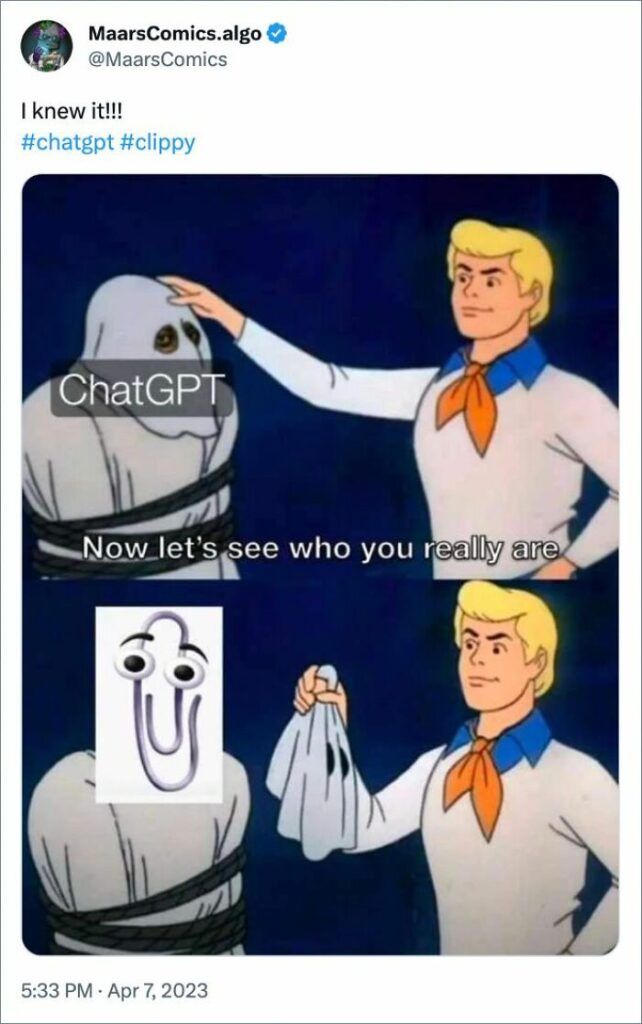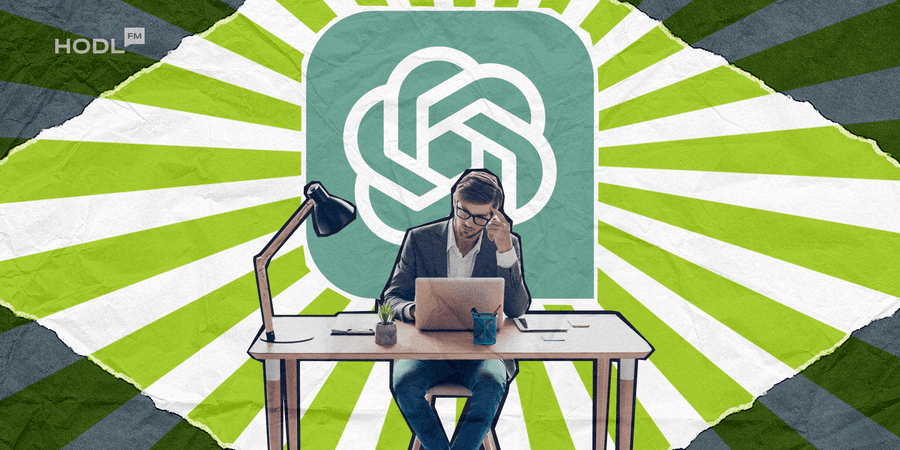Since its grand entrance in November 2022, ChatGPT has stirred a cocktail of both panic and excitement, dominated conversations, and even made some folks in various governments resort to banning it.
Former Y-Combinator president Sam Altman, LinkedIn co-founder Reid Hoffman, Tesla CEO Elon Musk, and several other tech icons came together in 2015 to found OpenAI, an artificial intelligence (AI) company with a mission to build human-friendly AI applications.

Sometimes one can question whether these guys remembered to place a ‘don’t take over the world’ clause on OpenAI’s code when they embarked on this mission.
7 years later, the company released an early demo of ChatGPT which quickly went viral for its ability to speak our language, understand context, and even create humor.
News of the revolutionary tool caught fire faster than celebrity gossip of accidentally leaked ‘bare minimums’.
Apart from the AI language processing tool, other software that OpenAI has launched includes AI art generator, DALL-E 2, and speech recognition platform Whisper.
Overview of ChatGPT
ChatGPT is an AI (artificial intelligence) chatbot tool that runs on OpenAI’s large language models (LLMs) and has natural language processing capabilities that can make sense of human conversations. This makes it possible for the tool to give answers to questions, craft written content, generate emails, provide business strategies, and even plan trips.
ChatGPT is like a virtual best friend forever who is smarter than your average houseplant and can understand your rants about the weather and existential crises.
It’s a Shakespeare of chatbots—able to decipher human conversations better than deciphering hieroglyphs after a night of heavy partying.
The next time you need a listening ear, just ping ChatGPT. It might not have a shoulder to rest on but can definitely listen to your woes about life, engage in small talk, and even take a tantrum or two whenever your socks disappear into the dryer for the 10th time.
The capabilities of ChatGPT have re-defined artificial intelligence and proved that machines can derive meaning from human language.
‘GPT’ on the name ChatGPT stands for Generative Pre-training Transformer, a reference to how the AI chatbot processes human language by using a special training approach called reinforcement learning.

The advancement of ChatGPT has undergone continuous development with each iteration of GPT, from GPT-1 to GPT-4. The first iteration provided the foundational infrastructure for the chatbot upon which it developed through unsupervised learning and training.
ChatGPT’s notable features include the ability to understand a conversation’s context and provide accurate responses.
The tool can also personalize interactions by analyzing a user’s chat history to tailor responses based on interests and preferences. ChatGPT also understands multiple languages, supports knowledge-base integration, and can evaluate the tone of a conversation.
Even if you take a break while interacting, the chatbot can maintain the conversation’s continuity. ChatGPT is also good for humor in case you need to craft a few jokes.
What has set ChatGPT apart from other chatbots is its implementation of the RHLF (Reinforcement Learning from Human Feedback). This is an approach for training large language models where human AI trainers adopt rewards, correction, and follow-up questions to fix wrong assumptions.
Related News:
The chatbot also analyzes vast amounts of information to trace patterns, communication styles, rules, and context to help it understand both the literal and contextual meanings of a diverse range of prompts. This approach also guarantees the creation of responses that closely resemble a human-like conversation
How ChatGPT Works
ChatGPT presently runs on the GPT-3.5 architecture, an advanced language model architecture by OpenAI. The chatbot has been trained on extensive and diverse data sets that comprise a wide range of subjects, styles, contexts, and languages.
To train the chatbot, OpenAI relies on deep learning techniques and the chatbot’s ability to implement neural networks when understanding the relationship between words, phrases, sentences, and concepts within a particular text.

One of the key elements of ChatGPT is its ability to employ deep learning mechanisms to infer meaning and recognize patterns when responding to a query. This makes each response relevant and coherent based on the provided prompt.
Training ChatGPT involves two steps, language modeling and fine-tuning. In language modeling, a team of experts train the model to make predictions about the next word when given a sequence of sentences. This assists the chatbot in learning a language’s statistical pattern including grammar rules, syntax, and correct word combinations.
The next step for training the chatbot involves fine-tuning its responses for a particular task based on a smaller dataset. This step helps the GPT to generate specialized responses when met with specific requirements.
Use Cases of ChatGPT
Customer support and chatbots
A study by Gartner revealed over half of the respondents were utilizing a chatbot for customer support.
In another survey by PSFK, more than three-quarters of respondents admitted they prefer interacting with a chatbot instead of waiting for human support.
However, many chatbot interactions are still not satisfactory but by utilizing ChatGPT plugins, customer-facing chatbots have managed to overcome their limitations and provide more contextual responses.
Content generation and writing assistance
Businesses and individuals are using ChatGPT to generate essays, social media posts, articles, think pieces, or emails. Most writers are also using the tool to come up with topics, content briefs or blog post outlines.
Language translation and interpretation
As a versatile language model with multilingual support, ChatGPT’s ability to understand and provide responses in different languages comes in handy when tackling translation and interpretation tasks. This means the tool can help people speaking different languages to overcome communication barriers.
Personal assistants and productivity tools
There are multiple ways to use ChatGPT and become even more productive in your daily tasks. For this reason, the tool is ranked among the top productivity tools that are helping professionals identify data trends, craft social media/blog content, prepare meetings, write agenda outlines, organize tasks, and plan trips and budgets.
Benefits and Limitations of ChatGPT
Benefits
- ChatGPT can help businesses and individuals achieve cost-effective completion of tasks instead of hiring additional employees.
- AI-powered tools like ChatGPT can power efficiency in work by handling routine/repetitive tasks.
- Using ChatGPT as a virtual tutor may come in handy when seeking explanations and demonstrations of complex subjects.
- When used in customer support, ChatGPT can provide instant responses that have better clarity compared to other chatbots.
- The chatbot is available 24/7 to provide prompt and continuous assistance.
- The tool’s ability to support multiple languages can help businesses with translation whenever they have to communicate with a different audience.
- ChatGPT’s ability to analyze user behavior and preferences enables it to tailor responses based on what a user most likely wants.
- As a highly scalable tool, ChatGPT can handle as many users as possible at any one time.
Limitations
- ChatGPT’s training only enables it to generate words based on user input and might not fully comprehend human language. This could make its responses shallow and lacking in insight.
- The tool cannot capture the latest events, especially those that took place after 2021. This invites the possibility of incorrect information. However, with the recent launch of GPT-4 Turbo, OpenAI announced the chatbot will be knowledgeable of events that took place until April 2023.
- Sometimes the responses provided by ChatGPT may sound unnatural and machine-like. Many writers have criticized the tool’s overuse of phrases like ‘and’ ‘ever-evolving’, and ‘the’
- ChatGPT does not cite sources even for statistical data and may also lack commentary on the meaning behind some of its analytical responses.
- The AI language processing tool continues to face challenges in tackling ethical considerations such as bias and misrepresentation when training their language models.
Future of ChatGPT
ChatGPT has the potential to transform how people and businesses interact with computers. When OpenAI released the tool, Microsoft made a quick move to debut its ChatGPT-powered Bing search engine. This indicates the possibility of ChatGPT replacing traditional search in the future by offering users an interactive, and more responsive experience.
Read Also:
- Scammers Exploit New AI Craze with Fake ChatGPT Tokens
- xAI Takes on ChatGPT, Boosts AI-Related Crypto Tokens
ChatGPT crossed 100 million users within 2 months after its launch, showing its remarkable adoption and potential to make people’s lives easier. Today, the tool commands a user base of 180.5 million users and has generated a total of 1.6 billion visits. According to OpenAI CEO Sam Altman, more than 100 million users visit the ChatGPT per week. These figures indicate the cultural phenomena that is ChatGPT, and how its functionality is helping millions of people achieve task efficiency and productivity. Although the tool has its limitations, OpenAI continues to build and train it on more data.




